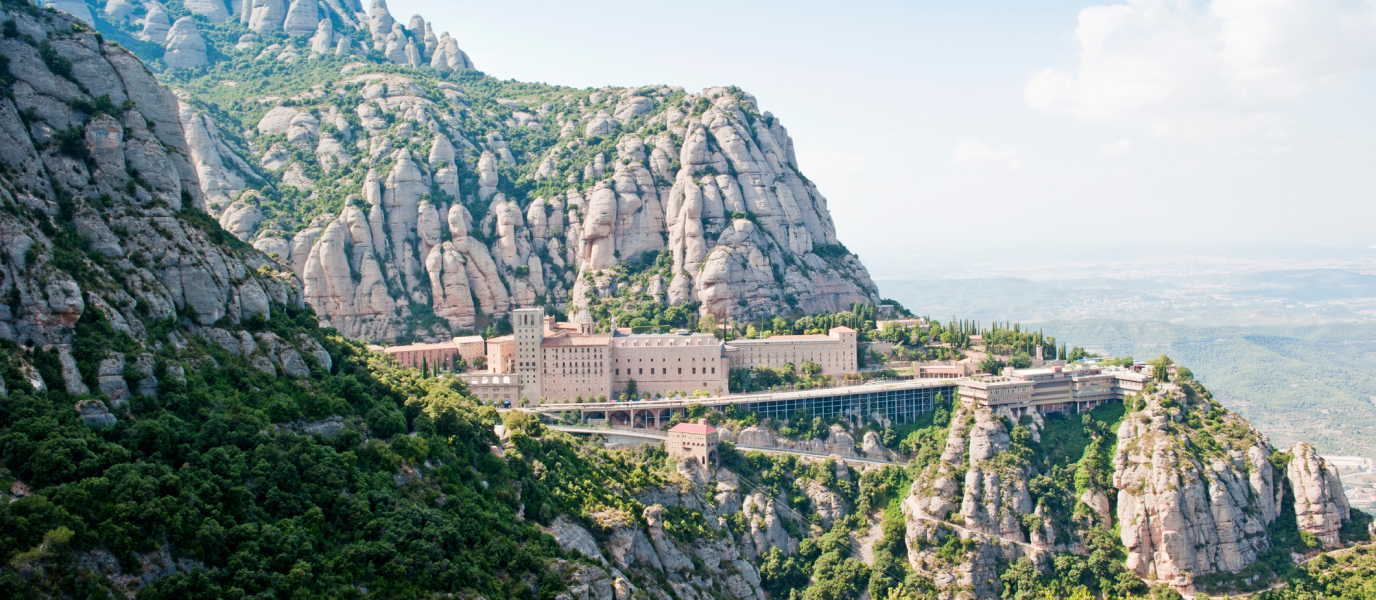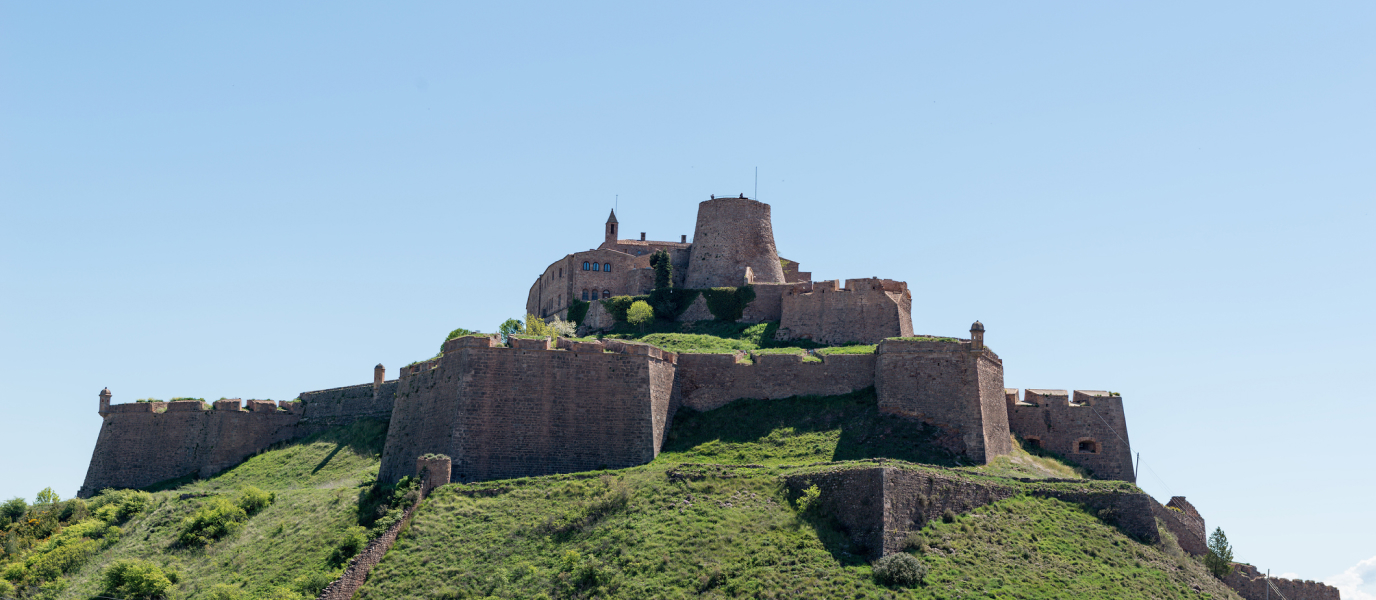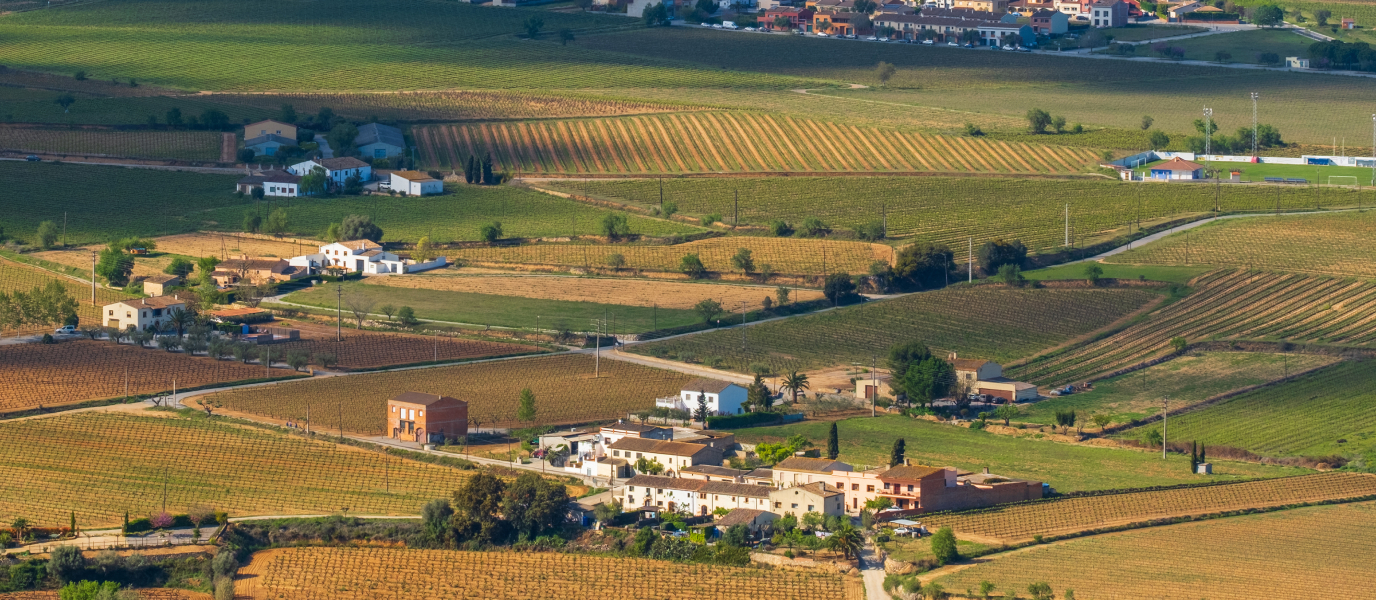If you’re the type of person who thinks no trip is complete until you’ve combined city and nature in equal measure, this article is for you. Because, although Barcelona is an exciting, frenetic city where you can spend a whole week doing activities of every kind, it’s also true that the surrounding area could keep you entertained for a whole year. Generally speaking, Catalonia has an excellent train network and people are often surprised by the remote places that can be reached. So, grab your backpack and read on because here you can learn more about some of the most fascinating places to visit near Barcelona. We’ll cover everything from beaches and coves to medieval villages, and even briefly outline some great hiking trails. Off we go!
Beaches near Barcelona
If you wake up with the urge for some sun and sand, one promising option is the world-famous Costa Brava, the coastal area that starts in Blanes and ends at the border with France. Why? Because it has nearly 215 kilometres (80 miles) of wild, craggy landscapes with stunning beaches, coves speckled with pine trees and uniquely beautiful fishing villages. And, in spite of being famously wild, today many of its points of interest can easily be reached by car thanks to the road network (traditionally known as the camí de ronda) created by the police in the nineteenth century to control smuggling along the Spanish sea border. We’ll explore two of the best:
· Camí de ronda – Cap de Creus:
Your route run along the stretch of coastline from Roses, in Girona province, to Port de la Selva, just two hours from Barcelona by car. It is part of Cap de Creus, an area declared a natural park in 1998 due to its geological importance. As you travel the trail, you’ll discover exciting jewels such as Cala Montjoi, Cala Prona and Cala Jugadora, idyllic coves with turquoise waters that are perfect for snorkelling. And if you’re looking for truly unspoilt corners that aren’t troubled by large numbers of visitors, try Cala de Galera or Cala Talabra which cannot be reached by car; hire a kayak at Portlligat or Port de la Selva and row until you reach them.
The beautiful picturesque fishing village of Cadaqués lies halfway along the route and makes the perfect excuse for a break; try the black rice, and learn more about the close links between the village and painter Salvador Dalí at the House-Museum.
· Cami de ronda – Tossa de Mar:
This time your route runs between the medieval town of Tossa del Mar and nearby Cala Pola. Just an hour and a quarter from Barcelona, Tossa de Mar makes the perfect day trip. In addition to hidden coves and beautiful trails offering magnificent views, its town plan is like no other due to the region’s eventful history. Long before it became a summer holiday destination, Tossa de Mar was a Neolithic, Iberian and Roman settlement, a past that is still visible in the remains of its ancient heritage and one reason it was beloved by film stars such as Ava Gardner and James Mason.
This nearly two-mile route has nerve-wracking precipices with impressive cliff-top views, magical coves such as Cala Bona and Cala Pola and caves that can only be reached by sea.
Beautiful villages near Barcelona
If the sands of Barcelona have quenched your thirst for the beach, you could also plan a short trip to any one of a number neighbouring towns. Sitges is considered to be one of the most beautiful in Catalonia; once a small fishing village it is now home to a famous film festival and is one of the best destinations close to Barcelona (just 40 minutes by car). Averaging 300 days of sunshine a year, it comes as no surprise to learn that Sitges has 26 beaches nearby and not one but three marinas. And that’s not all.
Sitges also has a rich architectural heritage firmly rooted in Catalan Modernism, a style popular at the end of the nineteenth and beginning of the twentieth centuries. The Palau de Maricel is perhaps the finest example, which also displays a collection of Catalan Modernist models inside. Further pleasures to be enjoyed in Sitges are its food, the port area being particularly good for restaurants, and its nightlife: Calle del Pecado is the best area for bars.
Colònia Güell is closer to Barcelona still: this small industrial estate is twenty minutes from the centre. Its history can be traced back to the second half of the twentieth century when it was founded by businessman Eusebi Güell i Bacigalupi to expand his textile business. At the time, the Güell family was one of the ten richest families in the world, so it is no surprise to learn that the person commissioned to design the worker colony was none other than architect Antoni Gaudí. Suffice to say that a trip to Colònia Güell is a journey to the heart of Catalan Modernism. Additionally, the unfinished Güell crypt, a UNESCO World Heritage Site since 2005, is perhaps the best example of this movement within the extensive architectural legacy within the worker colony.
Hiking near Barcelona
Ask anyone and they’ll tell you that one of the best hiking routes in Catalonia takes you up to the Monestir de Montserrat. Located in a park with the same name, about 30 miles from Barcelona, its unique landscape of huge rounded peaks, known as “needles”, is home to one of the most mystical places in the whole of Spain. It is the heart of religion in Catalonia and has captivated a diverse selection of famous figures over the years: San Ignacio de Loyola, Leonardo da Vinci, Goethe, Humboldt, and many more.
But Montserrat is far more than religion and spirituality. Its natural wilderness, 720 m above sea level, is packed with hiking trails and climbing routes and the series of viewpoints with views over the Llobregat river valley and Pyrenees are remarkable places to stop along the way. One of these trails is known as the Camí dels Degotalls and it leads hikers up an ascent softened by the peculiar shaped mountains to Monserrat abbey. There, at the summit, you’ll find the religious complex and the buildings constructed for pilgrims and visitors, with a range of restaurants, shops, accommodation options and a little-known but highly recommendable art gallery.
Note: It is also possible to reach the summit by rack railway or cable car.
Another hiking option involves going straight to the Parc Natural Delta de l’Ebre in Tarragona province. It couldn’t be more geographically different to Montserrat, and is filled with long beaches, rice fields, shifting dunes and riverside forests. The area can be explored in a number of different ways. For example, you could go bird-watching and look out for the wide variety of bird species that are found here; MónNatura Delta de l’Ebre is the ideal place to start. You could also hike through each of its areas, such as Punta del Fangar, a protected zone that can only be reached on foot.







































































